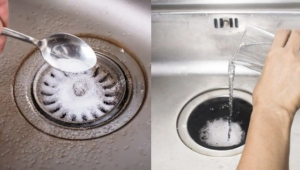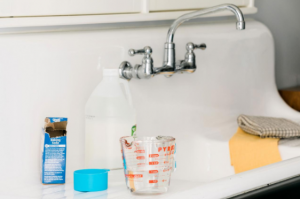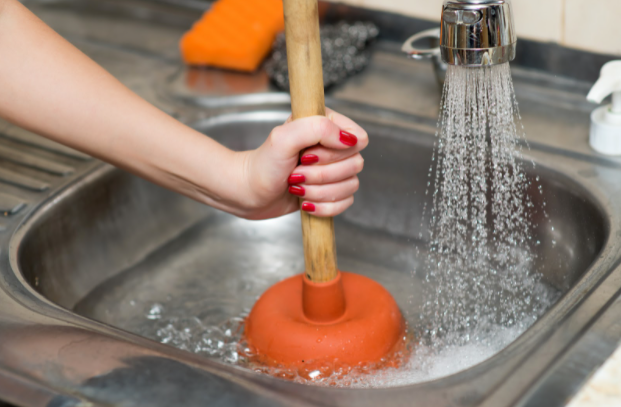How to Unclog Drains in a home
A blocked drain is inconvenient no matter where it occurs. Fortunately, most of the time the remedy is a quick one that homeowners can do themselves. Here are a few methods for unclogging your drains that will work for almost any obstruction.
We’re all aware of the red flags. It takes a bit longer for the sink to drain. In the shower, you see water gathering around your feet. And then there were the smells. Odors that are unusual and unpleasant. They’re all indicators that you’re about to have a clogged drain. Then, all of a sudden, there’s a bang. Your drain is entirely clogged. It’s something you need to take care of right away, or you’ll have to deal with the consequences of a burst pipe or a broken bathroom.
So you clear out the hair and filth that has accumulated on the drain’s surface. And then there’s nothing. You decide to use a liquid plumber. This isn’t good. After that, there’s the plunger. But what if it doesn’t show up to save the day? Before you go to that expense, here are ten techniques to get rid of the obstructions.
Safety Considerations
While there are no sharp equipment or hazardous materials required to clear drain clogs, bear in mind that drain blockages are frequently loaded with germs. To avoid skin and eye contact, it’s a good idea to always use basic safety equipment like rubber gloves and eye protection. Take the time to clean up once you’ve cleared a clog.
Here are easy ways to unclog your sink and shower drains in 2024:
- Pour a pot of boiling water down the drain to begin.
- Pour in a cup of baking soda and a solution of 1 cup water/1 cup vinegar.
- Wait 5 to 10 minutes after covering with the drain plug.
- Once more, pour boiling water down the drain.
- make use of The Wet & Dry Vacuum
- Clean the Pipe
- use the Drain Snake
1. The Bent Wire Hanger
It’s a simple idea, yet it’s surprisingly effective. Straighten up a normal wire coat hanger as much as you can. Then, to make a tiny hook, bend one end over. Start fishing after pushing that past the drain cover. You should be able to clear the drain of all kinds of hair and other nasties. Always remember that you should be drawing gunk out, not pushing it farther. Run the hot water once you’ve gotten as much out as you can, and it should clean things out beautifully.
2. Baking Soda and Vinegar
In a measuring cup, combine a third of a cup of baking soda and a third of a cup of vinegar. It will fizz right away, and you should pour it down the plugged drain right away. The fizzing motion will aid in the removal of crud, hair, and dirt from the pipe. Allow for one hour of rest time, or even overnight if possible. Using hot water, flush the toilet. Alternatively, throw as much dry baking soda down the drain as possible before adding the vinegar. (See also: 30 Things Vinegar Can Replace in Your Home.)
3. The Wet & Dry Vacuum
If you have a wet and dry shop vacuum, it may be a useful tool for clearing drains. Set it to vacuum liquids first. To avoid a mess, cover the vent. Then, over the drain, make the tightest seal you can. You might be resourceful and modify an old plunger head for this project. The vacuum can be powerful enough to pull the blockage up the pipe and into the vacuum bag when set to its maximum level. It isn’t always successful, but it is worth a try.
4. Boiling Water
It doesn’t get any easier than this in terms of advice. Boil as much water as the kettle will hold (or use the stove or microwave if you don’t have a kettle). Allow the hot water to work for a few seconds between each pour as you pour it down the drain in two to three phases. Unclogging a drain is typically the simplest and quickest method. If there’s any remaining water, reward yourself with a cup of tea.
5. Caustic Soda
Put on some rubber gloves and goggles. Chemical burns can be caused by caustic soda (also known as Sodium Hydroxide). You may get some at your local hardware shop, but always handle it with caution. Fill a mop bucket halfway with cold water, then add 3 cups of caustic soda. With an ancient wooden spoon, thoroughly mix it. It’ll start fizzing and heating up. Pour it down the clogged drain and wait 20 to 30 minutes before flushing it out with hot water. If required, repeat the process.
6. Cleaning the Pipe
Some plumbing chores I refuse to undertake, but this one is simple. To begin, place an empty bucket beneath the sink’s U-shaped pipe (the trap). The water that spills will be collected in the bucket. Loosen the slide nuts on both ends of the pipe with a plumber’s tool. You should be able to complete the procedure by hand. Remove the trap and turn it upside down to dump the contents into the bucket once it is free. You may also need to search inside it for trash, as well as the pipes that held it in place. The stubborn gunk may be removed using an old toothbrush. After rinsing the trap with water, put it back together. In the vast majority of instances, this is well enough.
7. The Drain Snake
This is a low-tech piece of equipment that performs admirably. It consists of a long flexible metal rope with a metal spiral at the end.
Any household can benefit from a plumber’s snake. This tool can clear blockages that are located outside the drain trap of a fixture, in a branch drain, or even in the main drain line. The equipment costs anything from $10 for a tiny manual snake that clears branch drain clogs to more than $200 for a power auger that clears numerous main drain obstructions. A basic hand snake is the best option for most households. When power augers are required, they can be hired.
Because using a drain snake is a dirty job, eye protection and rubber gloves are required.
Although it is occasionally feasible to run a tiny drain snake directly down a sink, shower, or bathtub drain opening, it is typically preferable to remove the drain trap and snake down the trap arm and into the branch drain.
8. Salt and Baking Soda
Pour half a cup of table salt and half a cup of baking soda down the clogged drain. After 10-20 minutes, pour boiling water down the drain. A chemical reaction between the salt, baking soda, and boiling water should dissolve some of the more stubborn obstructions.
9. Dish Detergent
Pour 1/4 cup dish detergent into the toilet bowl if it’s blocked. Then bring some water to a boil. The dish soap will serve as a lubricant, allowing any oily residue to be broken up. Then pour the hot water down the drain and get ready to plunge. Rubber gloves may be the next best thing if the plunger doesn’t work.
10. Baking Soda, Vinegar, Gravity, and Pressure
If your bath drain is plugged, combine some baking soda and vinegar, as described in step two. Pour it down the drain and cover it with the stopper. Fill the bathtub with water after 45-60 minutes. Remove the plug after that. The baking soda and vinegar should have softened the clog sufficiently that 40-60 gallons of water should be enough to remove it. You may also use the drain snake or plunging in combination with the weight of the water.
How to Unclog a Drain Using Eco-Friendly Drain Cleaner
Traditional drain cleaners include hazardous chemicals that can affect your family’s health as well as your pipes. You can make your own eco-friendly drain cleaner with only a few basic home items that is both safer and effective.
If the blockage is minimal, you may be able to just flush it out with water. On the stove, bring a pot of water to a boil. Remove it from the heat as it begins to boil, and carefully pour the water into the clogged drain. It may flow slowly at first, but after the obstruction is removed, water will drain normally. This treatment is effective for blockages that are primarily made up of soap or grease.
Baking soda, white vinegar, and a cloth or drain plug are needed for harder blockages. Pour half a cup of baking soda and half a cup of vinegar down the drain. Allow the mixture to boil and dissolve through the blockage while plugging the drain with the rag. Pour a pot of boiling water down the drain after approximately an hour, followed by more hot water from the faucet. For really stubborn obstructions, you may need to repeat the procedure a few times.
When to seek professional help
While the great majority of drain clogs occur in drain traps or branch drains, both of which are very simple to clear, there are a few obstructions that require expert assistance.
When a clog is serious enough to cause floor drains to back up, or if all of the home’s fixtures are impacted, it’s typically a main drain blockage. Clearing these big blockages frequently necessitates the use of huge power augers. While such instruments are available for hire, they are large, complex, and filthy equipment to use. In such circumstances, hiring a professional drain-cleaning service, of which there are several, is typically the best alternative.
